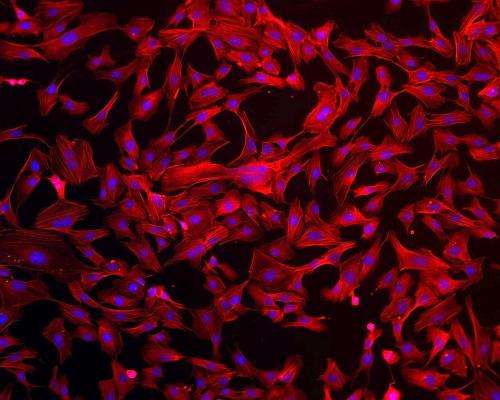Image: Human endothelial cells experiment bound for ISS

Components of human endothelial cells stained for identification. In red is the 'actin' protein that allows the cells to move, adhere, divide and react to stimuli. In blue are the cell nuclei containing DNA.
The Endothelial Cells experiment will fly to the International Space Station this year to understand how the cells that line our blood vessels react to weightlessness. Endothelial cells contain our blood and contract or expand our blood vessels as needed, regulating the flow of blood to our organs.
Blood flow changes in space because gravity no longer pulls blood towards astronauts' feet. By understanding the underlying adaptive mechanisms of how our bodies respond to weightlessness, this experiment aims to develop methods to help astronauts in space while showing possibilities for people on Earth – our endothelial cells become less effective with age – to live longer and healthier lives.
Cultured human endothelial cells will be grown in space in ESA's Kubik incubator for two weeks and then 'freeze' them chemically for analysis back on Earth.
For the team behind this experiment getting the experiment setup to work in space was challenging. "What is routine in laboratory is difficult in space" explains project leader Debora Angeloni from Scuola Superiore Sant'Anna (one of the three Universities of Pisa, Italy), "in space we have less samples to work with and the experiment needs to be self-contained."
The final experiment sits in the palm of your hand and is fully-automated and controlled electronically without the need to use up precious astronaut time.
"We expect the cells to express different genes, and to attach and move differently due to their trip in space. Among other things, the red-stained actin in this photo taken in preparation in our laboratory on Earth will be compared to the samples when they return from space."
Provided by European Space Agency


















